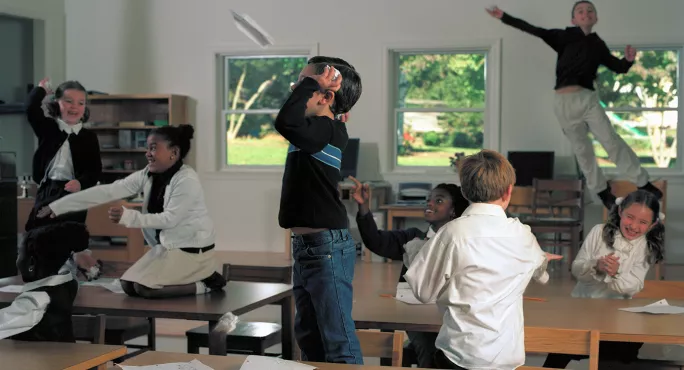The majority of school staff think class sizes are having a negative impact on pupils’ progress and behaviour, a new survey from teaching union NASUWT has shown.
In a survey of 3,000 teacher members, 91 per cent said class sizes were having a ‘negative’ or ‘significant negative’ impact on pupils’ progress and attainment, while 90 per cent said the same for pupils’ behaviour.
And 75 per cent of those responding said the number of pupils in their classes had increased over the past five years.
Four in ten teachers said staff cuts had caused the increase in pupils per class, while the same proportion blamed budget cuts and wider financial pressures on schools.
More than two-thirds (67 per cent) said the rise was down to an increase in the number of pupils on school rolls.
The survey findings come as representatives at NASUWT’s conference in Birmingham prepare to debate a motion today calling for governments and administrations across the UK to introduce maximum class sizes in all key stages.
Dr Patrick Roach, general secretary of NASUWT, said that increases in class numbers were having a “detrimental impact” on the learning experiences of pupils, and the health and safety of teachers and students.
“Large class sizes are also contributing to increased teacher workloads, reducing teachers’ ability to provide pupils with the individual support they need,” he added.
“The damaging impact of increased pupil numbers in classes has been further exposed during the pandemic, creating the perfect conditions for the transmission of Covid-19.
“This situation once again exposes the failure of government oversight over the past decade in relation to pupil place planning or in guaranteeing the additional investment needed to increase teacher numbers.”
In England and Wales, there is no statutory limit on the size of any class above key stage 1. Local authorities, governing bodies and academy trusts must limit the size of infant classes taught by a single qualified teacher to 30 or below.
Analysis last year showed that the number of children in England being taught in classes with 31 or more students has surged over the past decade.
In a letter to local authorities earlier this month, the education secretary, Nadhim Zahawi, said schools could exceed maximum class sizes to enable Ukrainian children to attend schools “as soon as possible”.




